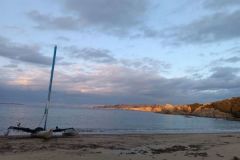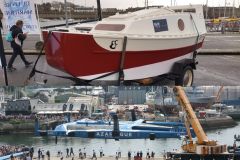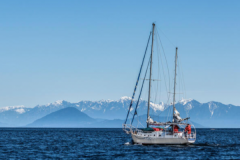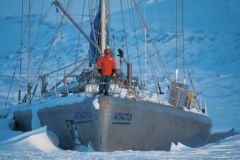A raft made of balsa wood trunks
The Kon-Tiki ("Sun King" Inca) is built on the model of traditional pre-Columbian boats. It is a balsa raft with a semi-open roof. The raft was 14 m long and 5 m wide and rested on a 60 cm diameter balsa trunk assembly, tied together with the hemp rope. Reinforcing trunks of 30 cm were tied transversely on the deck to stiffen the whole thing. A 9m high tall mast, made of a mangrove wood assembly (a kind of primitive glued laminate) supported a sail.
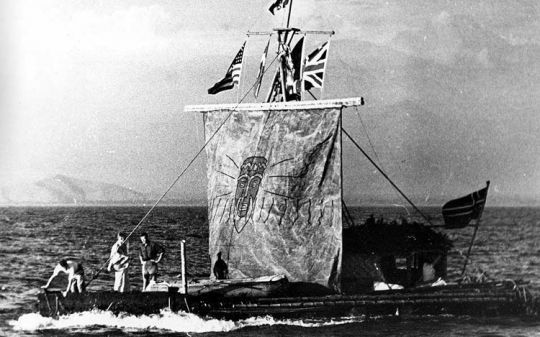
Only 6 m2 of canvas
The sail of this vast ship included a large square sail of only 6 m2, sometimes topped with a 2m2 cacatois. Depending on the moment, the crew also created a tapecul (a small mast with a small sail at the back of the boat) to find a balance under sail. The standing rigging consisted of fibre braids.
A 40 kg stone played the role of an anchor, secured to 15m of coconut fibre cable.
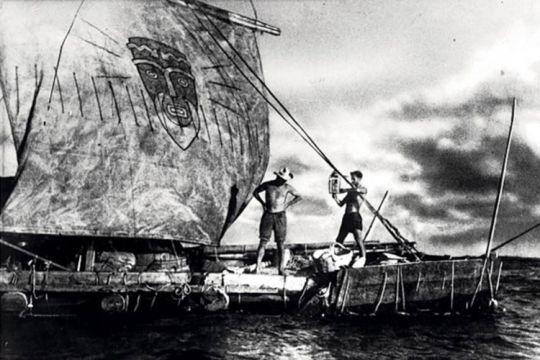
A 6 m board as a rudder
Several daggerboards crossed this bridge and exceeded about 60 cm below the raft to form an anti-drift plane. A 6-metre "oar" was used to steer the boat from the rear.
On the slatted split bamboo deck, a 4 m x 2.5 m cabin with a height of 1.5 m under the beams provided a relative shelter. Relative, because its banana leaf cover was far from waterproof in all weathers!
Inside this "vast" cabin was the only modern instrument, a longwave radio device with a range of 10,000 miles, the same model used by amateur and battery-powered radios. The kitchen took place on the deck where the jars containing cereals and other food from the Inca period were moored. But the main food was fish caught in large quantities.
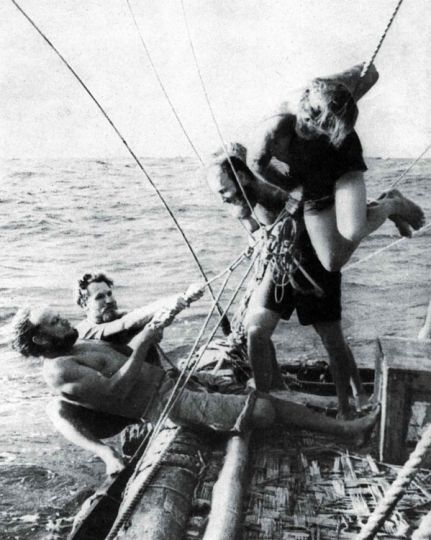
A raft of good constitution
This raft lasted the entire duration of the Transpacific, 101 days. Although he gave the crew a cold sweat by emitting loud squeaks, the hemp ropes did not wear out. Indeed, they tended to become embedded in the wood. On the other hand, balsa wood eventually soaked up water and floated much less at the finish.
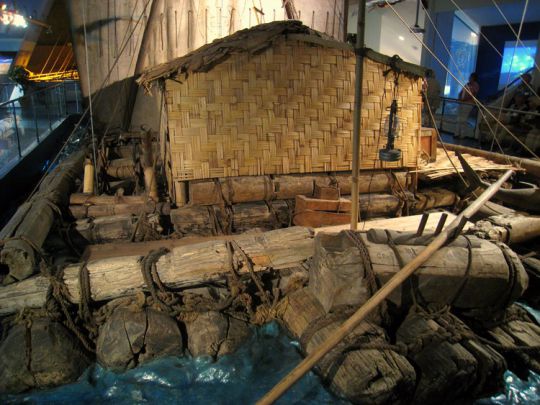
After arriving in Polynesia, the raft was repatriated near Oslo where it is on display in a museum.






